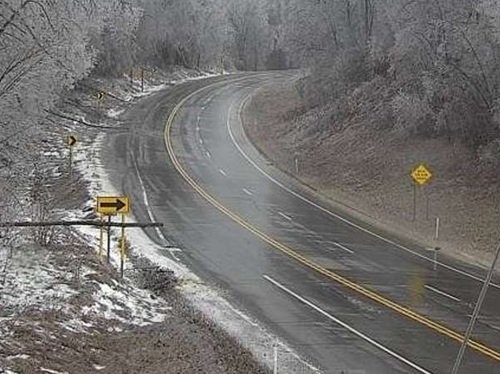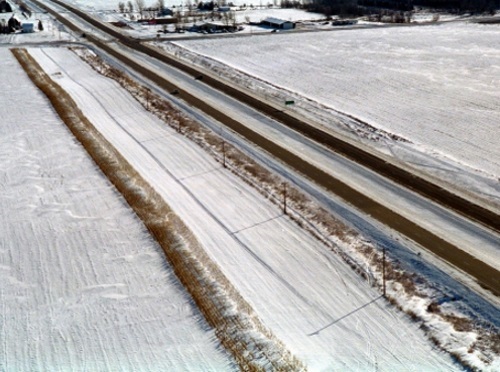The Minnesota Department of Transportation plans to “rejuvenate” seven so-called “living snow fences” in southwest Minnesota as part of a month-long effort to ensure the 20-year-old plantings can survive for another two decades.
[Above photo by the Minnesota DOT]
The agency noted that a “living snow fence” is comprised of trees, shrubs, native grasses, and/or wildflowers to trap snow as it blows across fields, piling it up before it reaches a bridge or roadway.

“Rejuvenation” work includes pruning healthy trees while removing and replacing any dead trees and shrubs. The agency noted it schedules such work on living snow fences between March and April specifically to reduce interference with the state’s bat and bird populations.
“A living snow fence is more than landscaping and highway beautification, it serves a purpose,” explained Dan Gullickson, Minnesota DOT’s blowing snow control shared services program supervisor, in a statement.
“We use nature to control blowing snow and rejuvenating these living snow fence sites will safeguard the health and vitality of the plantings,” he added.
The Minnesota DOT said living snow fences offer multiple infrastructure benefits, including:
- Prevent the formation of large snowdrifts and icing on roads.
- Improve motorist visibility by reducing whiteout conditions due to blowing snow.
- Control soil erosion and reduce spring flooding.
- Lessen environmental impact by reducing the need to use salt on the roads during winter.
 States
States
Podcast: Flashing LED Lights Can Boost Roadway Safety
December 5, 2025 States
States

